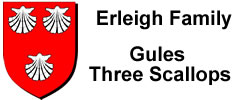Lyng: Economic history
A History of the County of Somerset: Volume 6, Andersfield, Cannington, and North Petherton Hundreds (Bridgwater and Neighbouring Parishes).
The Domesday estate at Lyng measured only 1 hide, half in demesne worked by 6 servi with 2 ploughteams. Three villani and 4 bordars with 2 teams worked the remainder. Apart from the arable, only 12 a. of meadow were recorded. (fn. 3) By 1349 the demesne arable measured 80 a. and there were 20 a. of enclosed meadow and 8 a. of pasture. (fn. 4) A nativus was manumitted in 1481. (fn. 5) Modest expansion seems to have occurred on the tenant holdings: in the early 13th century the prior of Taunton acquired from Henry of Erleigh 15 a. north of East Lyng village which Henry had enclosed with a 7-ft. ditch. (fn. 6) The Erleighs continued to hold small pieces of land on the ridge in the 13th century (fn. 7) but in 1213 Athelney acquired from them 100 a. of moor in a narrow strip under the ridge and a share in common pasture, brushwood, and firewood in North moor. (fn. 8) Some Lyng graziers paid rent for land on the moor to the demesne hundred of North Petherton in the earlier 14th century. (fn. 9) Further grants from Henry of Erleigh gave the abbot an extensive holding in North moor, mostly outside the parish in the wedge shaped area of North Petherton around Lyng Drove, immediately north of East Lyng village. (fn. 10)
A P Baggs and M C Siraut, ‘Lyng: Economic history’, in A History of the County of Somerset: Volume 6, Andersfield, Cannington, and North Petherton Hundreds (Bridgwater and Neighbouring Parishes), ed. R W Dunning and C R Elrington (London, 1992), pp. 58-60. British History Online http://www.british-history.ac.uk/vch/som/vol6/pp58-60 [accessed 23 May 2023].
